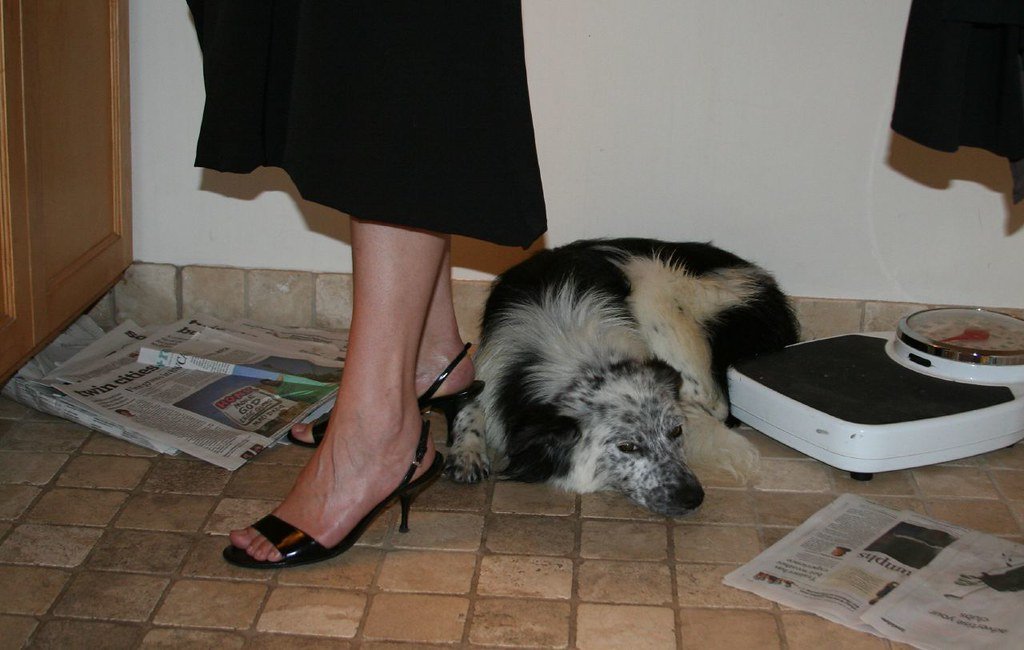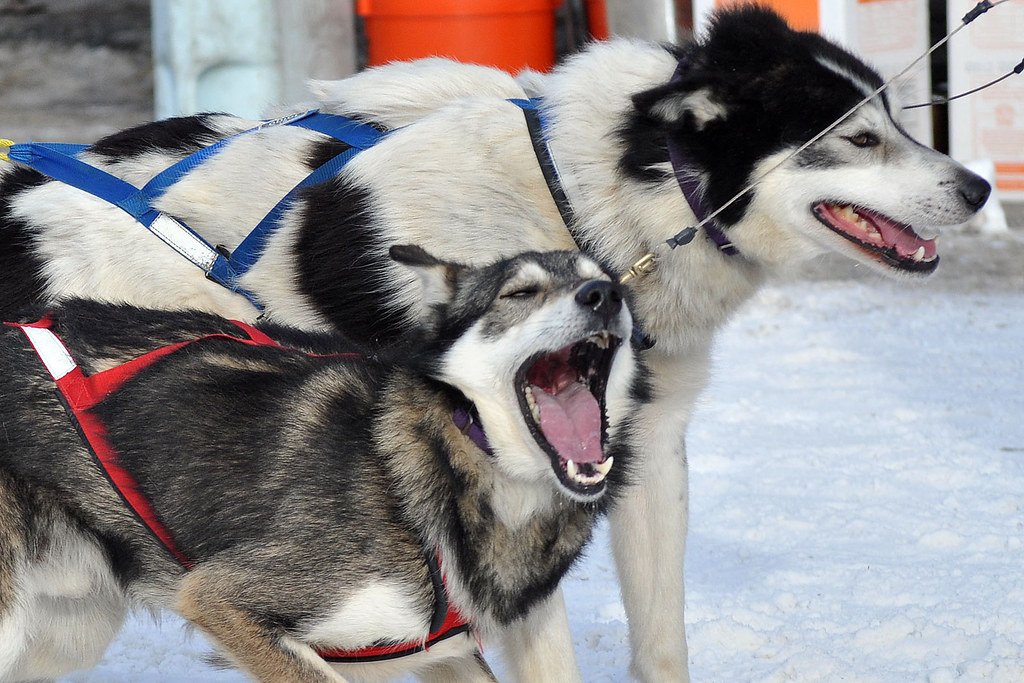Your dog follows you everywhere, sleeps at your feet, and seems perfectly content just being by your side. But beneath that seemingly independent exterior, there might be subtle signs that your furry companion needs more from you than meets the eye. Dogs are masters at hiding their emotional needs, often communicating through behaviors we might dismiss as quirky or normal.
As Dr. Jo Myers from Vetster explains, “You know what’s normal for your dog and should trust your instincts if something seems off.” The challenge lies in recognizing when these everyday behaviors cross the line from typical dog quirks into genuine calls for help. Understanding these subtle signals can transform your relationship with your pet and ensure they get the emotional and physical support they desperately need.
Excessive Panting When There’s No Obvious Reason

Dogs pant when hot, excited, or stressed. If your dog is panting even though they have not exercised, they may be experiencing stress. While occasional panting after a walk or during warm weather is perfectly normal, persistent panting in cool conditions signals something deeper is happening.
On average a healthy dog will take between 15 to 35 breaths per minute when they are resting. Therefore, anything more than 40 breaths a minute when your dog is at rest is considered to be abnormal and should be investigated. This type of panting often indicates anxiety, pain, or an underlying medical condition that requires your immediate attention.
Following You Everywhere Like a Shadow

Dogs can become unusually clingy, seeking constant attention and following their owners around the house. Separation Anxiety: Clinginess can be a sign of separation anxiety, where dogs become overly attached and distressed when apart from their owners. When your dog suddenly becomes your constant companion, it’s not just about love.
This shadow behavior often develops when dogs feel insecure or are experiencing changes in their environment. Your presence becomes their security blanket, and they’re desperately trying to communicate that they need more reassurance and stability from you than they’re currently receiving.
Changes in Sleep Patterns and Restlessness

Canine cognitive dysfunction, or CCD, refers to the gradual onset of dementia-like signs in senior dogs due to changes within the brain. These changes affect a dog’s behavior, motor function, and memory, and can be associated with panting. CCD is most likely to occur in dogs who are more than ten years old. Sadly, dogs with CCD are often confused, have a disrupted sleep-wake cycle, and may seem to get “lost” in their own homes.
Restless nights, pacing, or sudden changes in sleeping locations can indicate your dog is struggling with anxiety or confusion. They may be seeking comfort but don’t know how to ask for it directly, making these sleep disruptions a clear signal they need more emotional support from you.
Attention-Seeking Behaviors That Seem Out of Character

Attention-seeking behaviors – also known as demand behaviors – start for a variety of reasons, including anxiety and uncertainty. But regardless of why they start, these unwanted behaviors are always maintained by learning. When your normally well-behaved dog starts pawing at you, whining, or engaging in disruptive behaviors, they’re not just being naughty.
Remember, your dog isn’t trying to annoy you – they’re just trying to communicate their needs. As we’ve discussed, attention-seeking in dogs is an attempt to communicate. However, knowing what your dog wants can be challenging. These behaviors often emerge when dogs feel their basic emotional needs aren’t being met and they’re trying desperately to reconnect with you.
Subtle Changes in Eating Habits

It’s not out of the ordinary for your dog to skip a meal or two, especially if it’s hot outside – but any more than this should be a red flag that something’s off. Two days without eating is a clear sign that your dog needs an examination. While dramatic appetite loss is obvious, subtle changes like eating more slowly, being pickier, or showing less enthusiasm for treats can signal emotional distress.
A sudden change in your dog’s eating habits, such as a loss of appetite, reluctance to eat, or excessive thirst, could indicate a range of health problems. These signs could indicate gastrointestinal issues, dental problems, or even kidney disease. If your dog’s eating habits have changed, it is essential to seek veterinary attention promptly. These changes often reflect stress or anxiety that requires your increased attention and care.
Increased Vocalization or Unusual Quietness

Anxious dogs can become more vocal. For instance, if the owner leaves them home alone for too long they may start barking excessively or whimper in worry. Separation anxiety is common for dogs who are overly dependent on their owners. Dogs communicate through their voices, and changes in their vocal patterns tell a story.
A typically quiet dog becoming more vocal, or conversely, a chatty dog suddenly going silent, indicates they’re trying to process emotions they can’t handle alone. They need your reassurance and presence to feel secure again, whether they’re expressing it through increased barking or withdrawn silence.
Body Language Changes You Might Miss

Stressed dogs, like stressed people, may have dilated pupils and blink rapidly. They may open their eyes wide and show more sclera (white) than usual, giving them a startled appearance. Their ears may be pinned back against their head. Dogs speak volumes through their posture, and subtle changes often go unnoticed.
Dogs normally bear weight evenly on all four legs. If a healthy dog with no orthopedic problems shifts their weight to the rear legs or cowers, they may be exhibiting stress. When scared, dogs may also tuck their tails or become rigid. These physical signs indicate your dog is experiencing internal stress and needs your help to feel safe and secure again.
Excessive Grooming or Self-Soothing Behaviors

If your dog seems to be licking themselves more than usual or gnawing at their paw, it could be a sign of anxiousness. Some dogs do this when they are away from their owners for too long. If you notice this behavior, you can reassure your dog with words and affection. When dogs feel overwhelmed or anxious, they often turn to repetitive behaviors for comfort.
Abnormal repetitive behaviors occur when dogs do not adjust to a situation in an appropriate way, often responding with repetitive or fixed movements or actions. Abnormal repetitive behaviors include both compulsive/impulsive and stereotypic behaviors. Examples include signs pertaining to the mouth (eating non-food objects, licking, gulping, and excessive eating), brain (repeated jaw snapping, light chasing), movement (spinning, pouncing), or self-directed injuries (hair plucking, excessive skin licking). These behaviors signal they need more mental stimulation and emotional support from you.
Avoidance Behaviors and Social Withdrawal

When faced with an unwelcome situation, dogs may “escape” by focusing on something else. They may sniff or dig the ground, lick their genitals, or simply turn away. Ignoring someone may not be polite, but it is surely better than being aggressive. If your dog avoids interaction with other dogs or people, do not force the issue.
When your normally social dog starts avoiding interactions, hiding, or seeming disinterested in activities they once enjoyed, it’s a clear sign they’re overwhelmed. They need you to create a safer, more predictable environment and gradually help them rebuild their confidence through patient, consistent support.
Regression in House Training or Learned Behaviors

Perhaps one of the most well-known dog anxiety symptoms is potty accidents. When dogs are feeling fearful they can sometimes urinate indoors. This does not mean your dog is behaving badly, it may mean they are anxious. The best thing you can do in this situation is clean up the accident when you notice it and not scold them for urinating where they aren’t supposed to.
Like people, nervous dogs may experience an increased urgency to urinate or defecate. Dogs may experience gastrointestinal (GI) upset that can include vomiting, diarrhea, and refusing food. When a previously house-trained dog starts having accidents or forgets basic commands, it’s often stress-related and indicates they need more stability and reassurance from you to feel secure again.
Conclusion

Recognizing these subtle signs isn’t about becoming paranoid about every little change in your dog’s behavior – it’s about becoming a more attentive and responsive companion. Your dog’s needs extend far beyond food, water, and shelter. They crave emotional security, mental stimulation, and the reassurance that comes from knowing you’re truly present for them.
If your dog’s behaviour has changed, they are exhibiting any problem behaviours, or you are worried about their emotional wellbeing, then your vet should be your first point of contact for advice. They will be able to rule out any medical causes or treat problems like pain. When you notice these signs, don’t wait – your dog is telling you they need more from your relationship right now.
The beautiful thing about dogs is their incredible capacity for resilience and joy when their needs are met. By learning to read these subtle signals and responding with increased attention, patience, and care, you’re not just helping your dog – you’re deepening one of the most rewarding relationships in your life. What subtle sign did your dog show you that you initially missed?

Andrew Alpin from India is the Brand Manager of Doggo digest. Andrew is an experienced content specialist and social media manager with a passion for writing. His forte includes health and wellness, Travel, Animals, and Nature. A nature nomad, Andrew is obsessed with mountains and loves high-altitude trekking. He has been on several Himalayan treks in India including the Everest Base Camp in Nepal.





